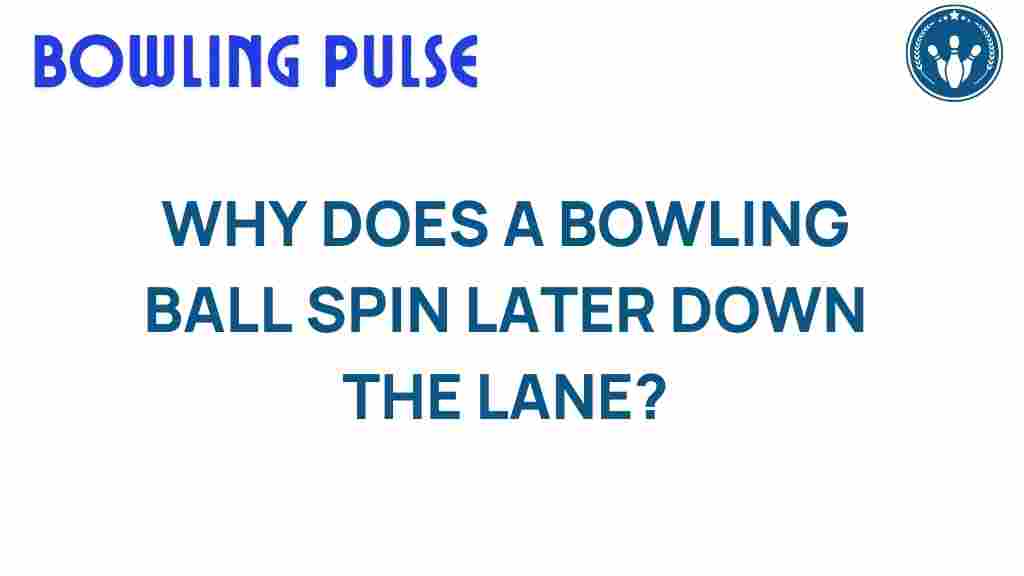The Science Behind Bowling Ball Spin: Why It Matters on the Lane
Bowling is not just a game of knocking down pins; it is a complex sport grounded in physics and sports science. One of the most critical aspects of bowling is the bowling ball spin, which can significantly impact your performance on the lane. Understanding the mechanics behind spin, rotation, and lane dynamics can elevate your game from amateur to professional. In this article, we will delve into the physics of bowling, explore essential bowling techniques, and discuss how to maximize your bowling performance through effective grip and ball selection.
Understanding Bowling Ball Spin
The term “bowling ball spin” refers to the rotation of the ball as it travels down the lane. The amount and type of spin can affect how the ball interacts with the lane surface and ultimately how it hits the pins. Here are some key points about bowling ball spin:
- Types of Spin: There are two primary types of spin in bowling: hook and straight. A hook involves a significant rotation that causes the ball to curve, while a straight shot has minimal rotation.
- Importance of Spin: The right spin can help you control the path of the ball, increasing your chances of striking down all ten pins.
- Effect on Lane Dynamics: The spin and rotation of the ball affect how it interacts with the oil patterns on the lane, which can change the ball’s trajectory and the angle at which it hits the pins.
The Physics of Bowling
The physics of bowling involves the study of forces, motion, and energy transfer. Here are some fundamental concepts that explain the mechanics behind bowling:
- Force: The initial force applied when releasing the ball determines its speed and direction.
- Mass: The weight of the bowling ball impacts how much force is required to achieve the desired speed and spin.
- Gravity: Once the ball is released, gravity pulls it downwards, affecting its trajectory.
- Friction: The interaction between the ball and the lane surface creates friction, which influences spin and speed.
Bowling Techniques to Enhance Spin
To master bowling ball spin, you need to employ specific techniques during your approach and release. Here’s a step-by-step guide to help you develop effective bowling techniques:
1. Proper Grip
Your grip on the ball is crucial for achieving the desired spin. Here are some tips on how to grip the ball:
- Fingers: Insert your fingers into the holes up to the second knuckle for optimal control.
- Thumb: Ensure your thumb is fully inserted but can be easily released at the right moment.
- Pressure: Maintain a relaxed grip to allow for a smooth release, which is essential for generating spin.
2. The Approach
Your approach sets the foundation for a successful delivery. Follow these steps:
- Stance: Begin with a balanced stance, feet shoulder-width apart, and the ball held at waist height.
- Steps: Take a few smooth steps forward, coordinating your arm swing with your footwork.
- Timing: Ensure your release coincides with your final step for maximum power and control.
3. The Release
The release is where you can generate the most spin. Here’s how to execute a proper release:
- Lift: As you release the ball, lift your fingers upwards to create a flicking motion that increases rotation.
- Follow Through: Maintain your arm swing after the ball is released to ensure a smooth motion.
Lane Dynamics and Their Impact on Bowling Performance
Understanding lane dynamics is essential for any bowler looking to improve their game. Lane conditions, including oil patterns, can significantly affect how your ball behaves after release. Here are some factors to consider:
1. Oil Patterns
The application of oil on the lane affects friction and ball movement. Different patterns can lead to varying amounts of hook. Here are common oil patterns:
- House Patterns: These are typically easier for beginners, allowing for more hook and less precision.
- Sport Patterns: These require a higher level of skill and precision, as they have less oil in the middle, leading to a sharper hook.
2. Lane Surface
The surface material of the lane can also influence your ball’s performance. For example:
- Wood Lanes: Tend to provide more friction, which can help generate more spin.
- Synthetic Lanes: Typically offer a smoother surface, which can result in less friction and less spin.
Common Issues and Troubleshooting Tips
Even the best bowlers can encounter issues with their spin and performance. Here are some common problems and their solutions:
1. Insufficient Spin
If you find that your ball is not spinning enough, consider the following:
- Check Your Grip: Ensure you are gripping the ball correctly and applying enough pressure with your fingers.
- Improve Your Release: Focus on lifting your fingers during the release for more rotation.
2. Excessive Hook
If your ball is hooking too much, try these adjustments:
- Change Your Release Angle: A flatter release can help reduce the hook.
- Adjust Ball Selection: Choose a ball with a lower differential for less hook.
Conclusion
Mastering bowling ball spin is essential for improving your overall bowling performance. By applying the principles of the physics of bowling, utilizing effective bowling techniques, and understanding lane dynamics, you can enhance your skills on the lane. Remember to experiment with your grip and ball selection to find what works best for you. With practice and dedication, you’ll see significant improvements in your game.
For more detailed information, check out this helpful resource on bowling techniques. And don’t forget to explore the world of sports science to further enhance your understanding of bowling!
This article is in the category Techniques and created by BowlingPulse Team
